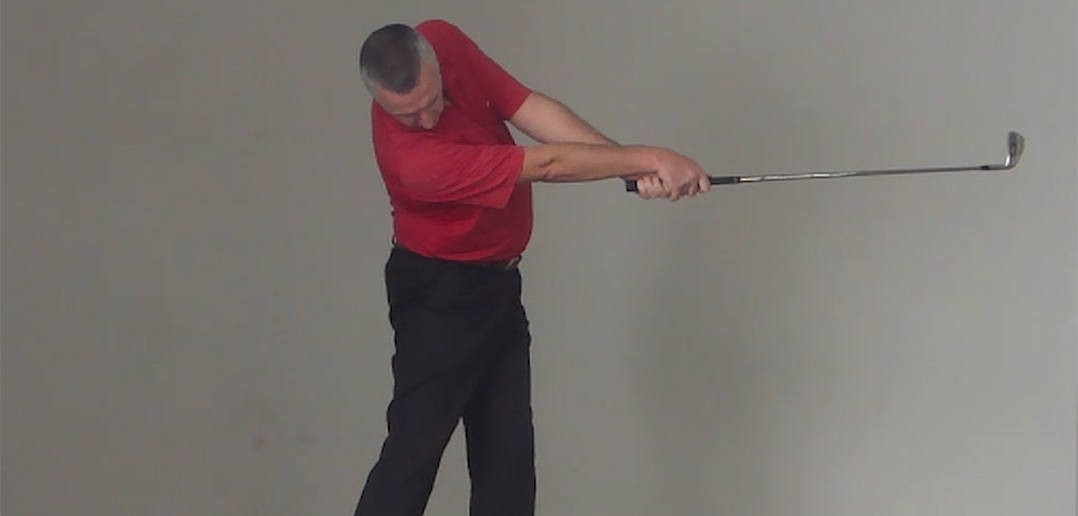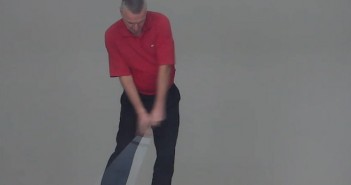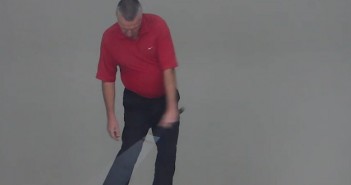In this drill, you’re going to learn how to make one of the hallmark moves of a truly great golf swing – extending through impact.
Exactly how to extend through impact in the golf swing is something that is hardly every taught, and it’s not well understood by 99% of amateur golfers, yet it’s one of the most important moves required for great ball striking, consistency, and distance.
When you see an image of a golfer with great extension after impact, you just instantly know they are good at this game, really good!
Most amateur golfers see extension as just keeping their arms straight after impact. It’s a by-product of a good downswing. Simple, right?
And yet hardly anyone can do it. If you think you can, take a close look at yourself on video. You’re either a very good golfer, or your ideas of what you are doing don’t match with reality.
And it’s far more than just a by-product of a good downswing!
Extending properly through impact is a key component of the proper release of the golf club. It will enable you to swing more efficiently, to strike the ball better and more consistently, and to generate much more club head speed through impact, for significantly greater distance, control and accuracy.
The truth is that there is a technique to great extension through impact.
It’s a fairly simple technique, but it involves moving your body in a way that is probably unusual for you, and it’s going to take some practice to perfect.
The great news, however, is that you’re about to learn exactly how it’s done, and how to learn it!
In no time at all you’ll be striking the ball better, more consistently, and much further than you ever thought possible!
As always, apologies to the lefties out there, but for simplicity this article will describe movements for the right-handed golfer.
This is the eighth, and final, drill in a series that breaks down and isolates the movements in the proper release of the golf club.
If you haven’t yet become proficient with the movements in the previous drills in this series, it is very important that you spend some time working on them before attempting this drill.
It’s natural to want to progress through the drills as quickly as possible, but if you haven’t first started to ingrain the basic movement patterns, then your impatience will hinder the improvements to your golf swing.
For more information on how this learning process works, see How to Learn a Great Golf Swing.
For a better understanding of what this drill is trying to achieve, and why these movements work, please see Golf Swing 504 – Downswing: How to Release the Golf Club, Golf Lag and the Compound Pendulum, and The Role of the Right Arm in the Golf Downswing.
You may also want to reread Fitness 301 – Thoracic Spine Mobility for a More Powerful Golf Swing.
The Drill
Although we’re now getting close to a real golf swing, it is important to remember that this is a drill, we’re still isolating and exaggerating certain movements – the real golf swing will be different since it incorporates a number of other movements, but the feelings and movement patterns that you are ingraining here will quickly improve your golf swing.
Caution: This drill involves moving your body in a way that is probably foreign to you. We strongly recommend that you warm up before working on it, as you should with any physical exercise. This is a great time to practise your Perfect Golf Warm Up.
Just as with any new physical exercise, you may find, at first, that you experience a few aches and pains after working on this drill. That’s a normal part of learning a new movement. If, however, you feel any pain during the drill then stop immediately and consult your physician.
You should perform this drill in front of a full-length mirror… 
or Log In
…If you have any questions or comments about this or other articles on Golf Loopy, please send us an email.
Next up: we’ll solve one of the greatest problems faced by amateur golfers, in Golf Swing Drill 505 – Downswing: Maintaining Posture.




